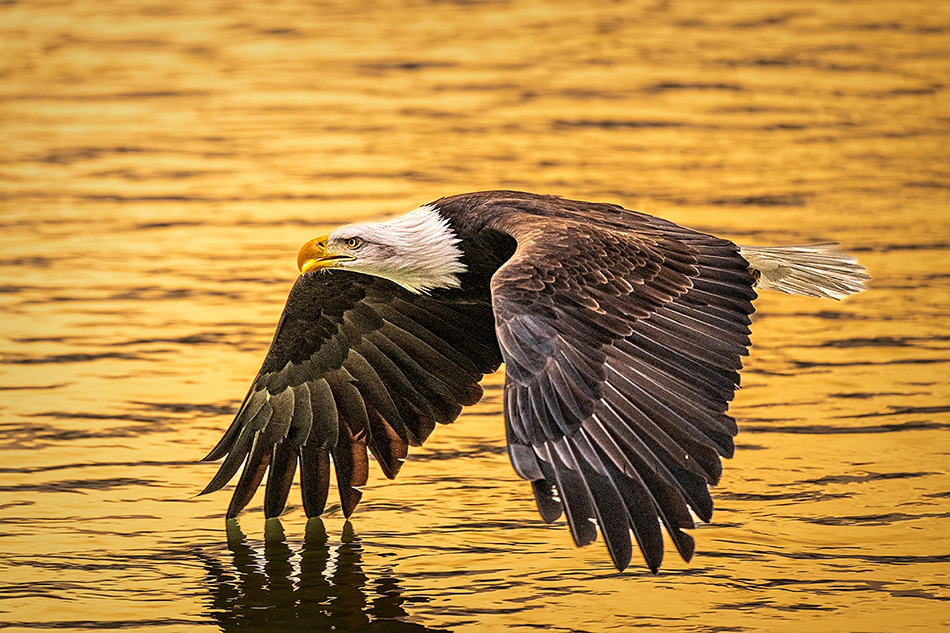
We were recently in Haines, Alaska photographing bald eagles on the Chilkat Bald Eagle Reserve. As expected it was a magical experience, with lots of birds and varied weather. Sun, snow, rain, fog…we saw it all this year. A major question for our workshop groups was what mode to use when shooting eagles. For all my wildlife I use Manual Mode with Auto ISO. This way I have total control over shutter speed and aperture, and let the camera choose ISO for changing exposure values. If needed I can also use exposure compensation in this mode, which happed frequently in Haines with varying backgrounds from white to black. Remember, your camera always meters the scene to average out the exposure value. If I aim at a snowy field, no matter what metering mode I am in, the camera will give me an exposure that would turn the snow to gray, the middle tone value. To compensate, I adjust my exposure compensation to plus 1 or more, adding more light to the image and turning the snow to white in color. Also important to remember is a camera meters reflected light, unlike hand held incident meters which meter light falling onto the subject, not reflected from it.
This concept brings up an interesting point. Sometimes I don’t use Manual Mode with Auto ISO. Instead, I just use manual mode. Why? Take a look at the eagle image above. We were shooting on a sunny evening, the light was staying fairly consistent. This eagle was perched on a gray gravel bar along the river. Using Manual Mode Auto ISO my exposure was correct with no exposure compensation. But I thought this bird might fly down the river, and as it passed me it would be right in front of the very bright river reflecting the sunset. If I metered the river right in front of me with the brightest orange reflection, the exposure was almost two stops different. The camera metered the bright orange water and adjusted ISO so the water would be much darker, a middle tone, instead of the beautiful bright highlight it actually was. On top of that, my eagle would be underexposed against the bright water.
What to do? I metered the eagle sitting on the gravel bar so the exposure was slightly bright since I was anticipating the best shots would be of the bird flying in front of the orange water. I also just took a quick look through the camera at the orange water with this meter setting to make sure it looked good…a little under exposed, but good for the backlit eagle (love electronic viewfinders). The eagle took off along the water and flew right through the scene, as we all knew it would, and I had my shot. My exposure mode was Manual, with no Auto ISO.
Consider the lighting and backgrounds when you are photographing wildlife. More often than not Manual Mode Auto ISO should work great, with adjustments using exposure compensation. But if your wildlife is going to quickly move into different background color, you might want to meter on the animal in manual mode, and not use Auto ISO. That way no matter where your subject goes, as long as it stays in the same light, your meter is set for the animal, not the background it moves against, and your exposure should be accurate.